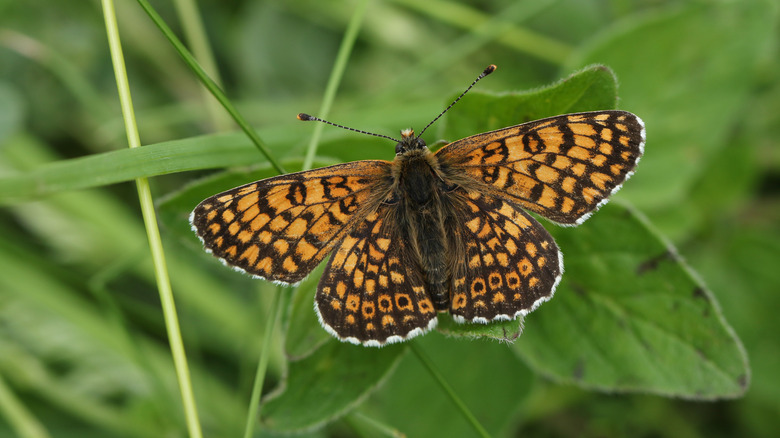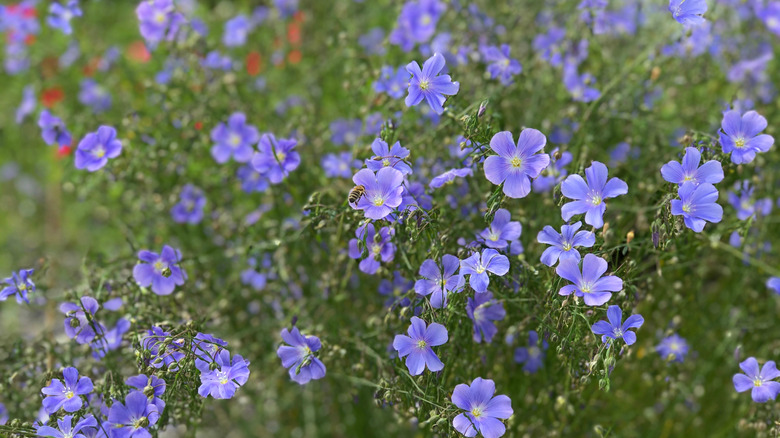Plant This Fast-Growing Beautiful Blue Flower In Spring & Attract Fritillary Butterflies
If you're keen to get your pollinator garden off to a good start, mass-planting wildflowers early in spring is the way to go. Just imagine a pretty, meadow-like patch in your yard with colorful blooms swaying happily in the breeze while bees and butterflies buzz around in the warm sunshine. And a fast-growing, beautiful blue flower you should consider adding to your patch is Lewis flax (Linum lewisii). Not only will it keep the bees busy, but it will also attract variegated fritillary butterflies — one of many breathtaking butterflies you might see flying around when you have plenty of colorful flowers in the yard.
Lewis flax is a dainty-looking wildflower that has the prettiest five-petalled blue blooms on slender stems that can be as tall as 20 inches. The flowers appear in spring, just in time to lure in all those pollinators. As a short-lived perennial, it can be grown in USDA hardiness zones 4 through 8, with each plant only lasting a few years. However, it does self-seed freely, which means that once you have it growing, it's likely to keep coming up in your garden. Of course, you can always make sure of its continued presence by collecting the seeds and sowing them from late fall to early spring. Apart from butterflies and other pollinators, this wildflower also attracts birds, while deer like to munch on the seeds. A word of caution: The leaves, stems, and seeds are toxic to humans and animals as they contain cyanide.
How to plant Lewis flax in your spring flower garden
Planting and growing this colorful wildflower in your garden is relatively simple. Choose a sunny spot to sow the seeds in your spring flower garden. This plant will flourish in sandy soil that's not too rich and can be kept fairly dry. It produces a large taproot, which allows it to access water deeper in the soil. Once established, Lewis flax will flower profusely from late spring and right through summer. It's not necessary to deadhead the blooms because they'll drop off on their own, only to be replaced by many more the following day.
If you don't want these plants to spread around your garden in an uncontrolled fashion, cut off the spent flower stems with the seed capsules attached and collect the seeds for resowing. Seeds of this species can remain viable for many years as long as they're stored in a cold environment. Another benefit of having this plant in your landscape is that it's fire resistant because its leaves and stems have quite a high moisture content. Finally, if you simply adore the sight of blue blooms in your yard, explore a few other stunning blue flowers to grow in the garden.

